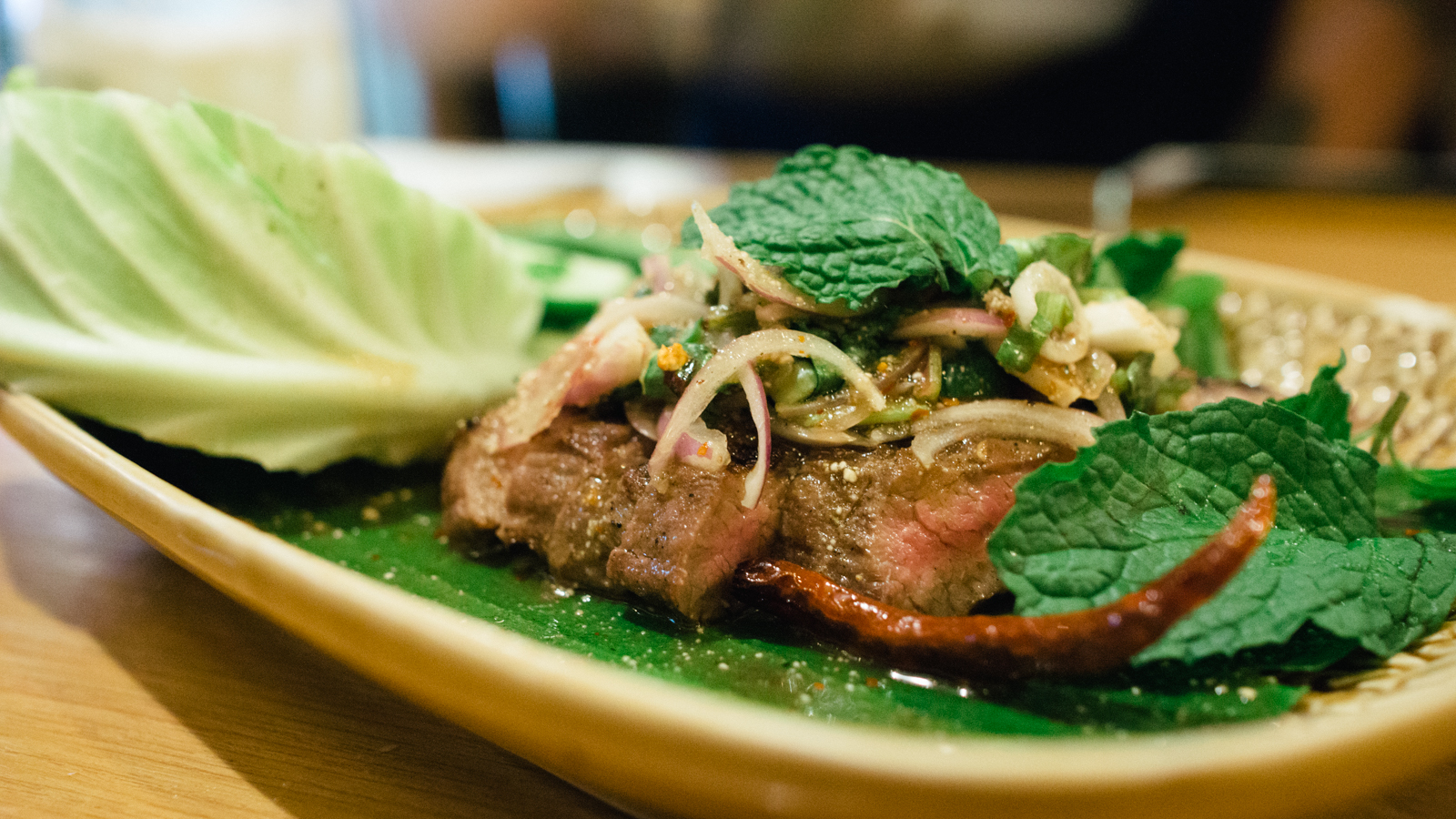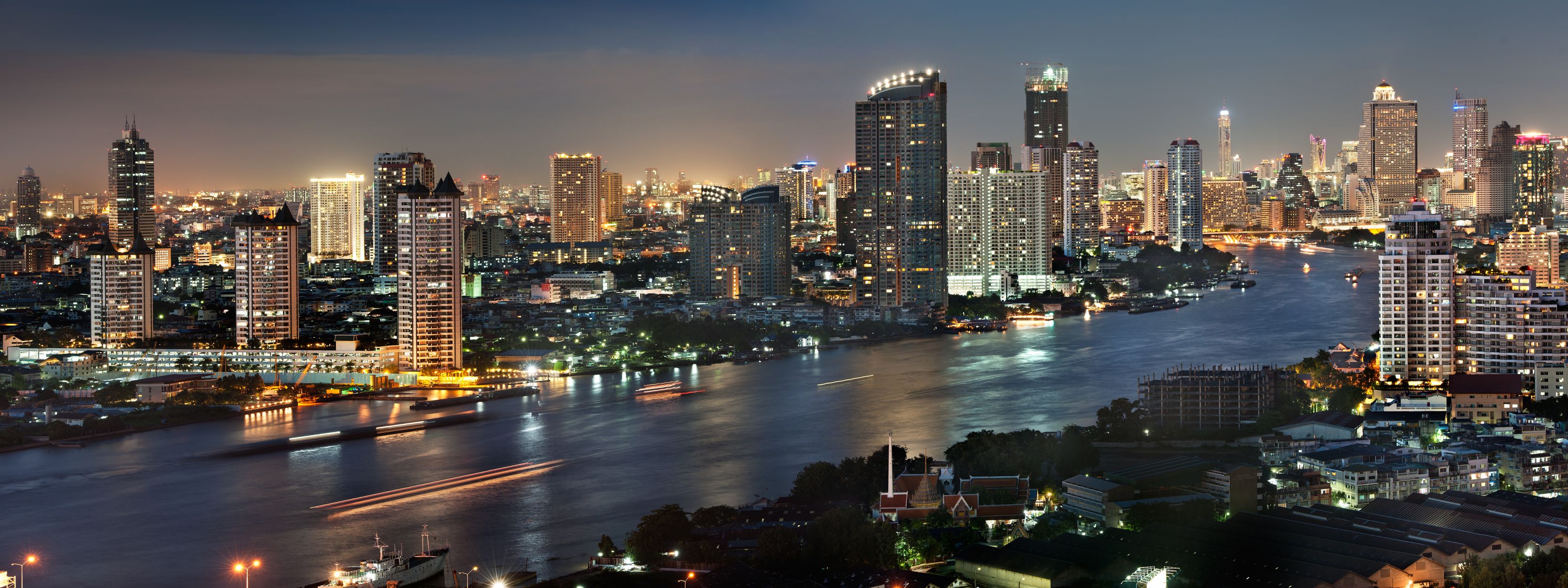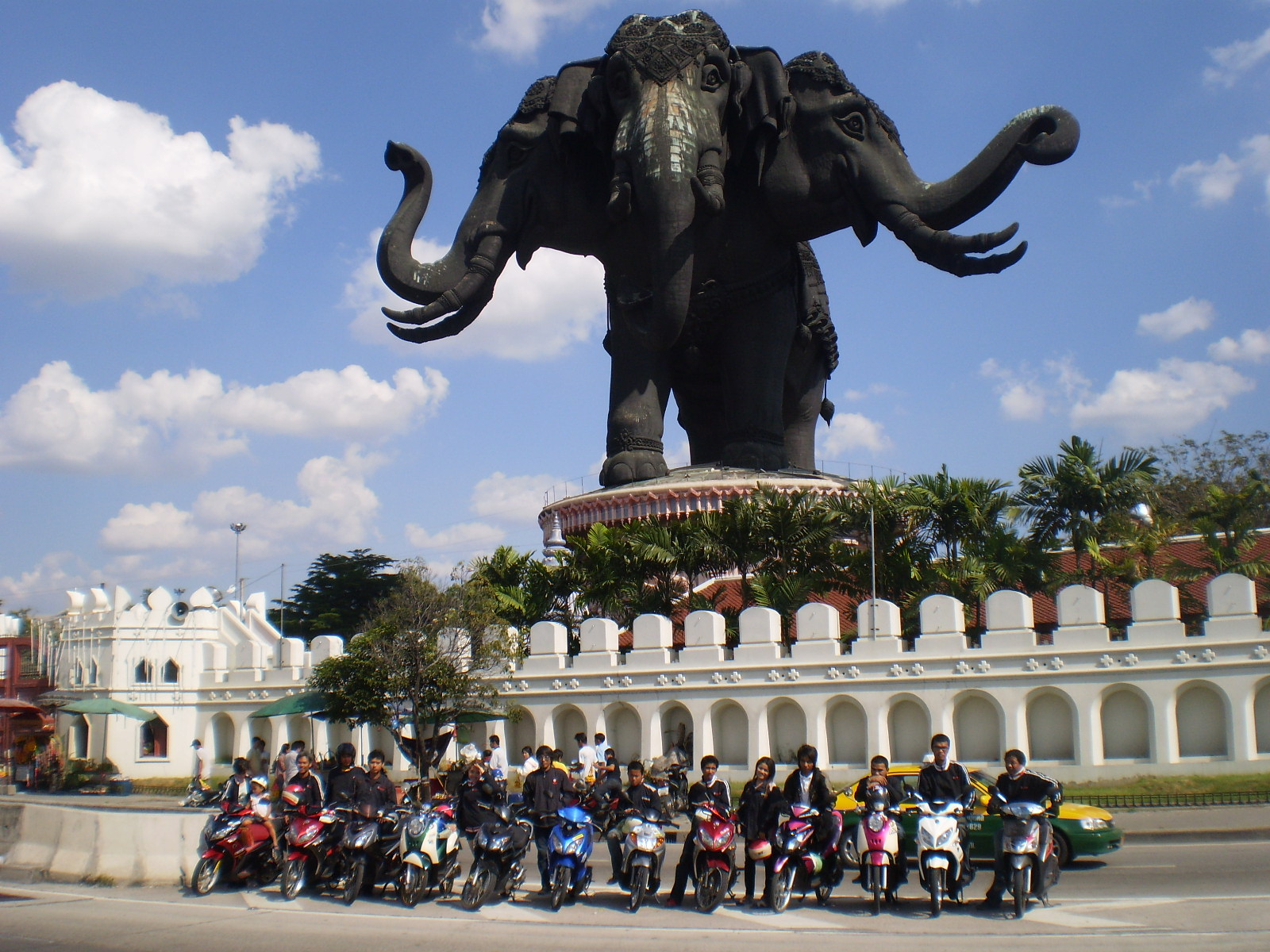Northern Thai Cuisine
Thai food of the north, in some way, is cooked with the sole thought for the taste for the northern people. The recipe consists of vegetable and ingredients available in their immediate vicinity. The common meal includes steamed glutinous rice, chili sauces which come in a host of varieties, such as “namprik noom”, “namprik dang”, “namprik ong” and chili soups (gang) such as gang hangle, gang hoh, gang kae. In addition there are also, local sausages such as sai ua, and nham; steamed meat, roasted pork, pork resin, fried pork, fried chicken and vegetable to go with them.
The northern people have penchant for medium cooked food with a touch of salty tastes almost to the exclusion of sweet and sour tastes. Meat preferred by the northern people is pork followed by beef, chicken, duck, bird etc. Sea food is the least known on account of the remoteness of the northern region from the sea.
Thai food of the north does not lack in varieties. These are dishes to be consumed at different times of the day. The northern breakfast known in the local dialect as khao gnai consisting mainly of steamed glutinous rice. Cooked in the early hours of the day, steamed glutinous rice is packed in a wicker basket made from bamboo splints or palmyra palm leaves. The farmer takes the packed basket to the working rice field and eat the glutinous rice as lunch, known in the dialect as “khao ton”. Dinner or “khoa lang” is an familiar affair is served on raised wooden tray or “kan toke”. The tray which is about 15 to 30 inches in diameter is painted in red.
Traditional Method of Serving Northern Food
The northern people are known to follow their traditions in a very strict and faithful manner, in particular the tradition of serving and partaking of the evening meal. Food is placed in small cups placed on “kantoke” which could be an inlaid wooden or brass tray depending on the economic status of the house owner. Served together with “kantoke” is steamed glutinous rice that is the staple food of the northerner packed in a wicker basket. There is also a kendi containing drinking water nearby. Water is poured from the kendi to a silver drinking cup from which water is drunk. After the main course come desserts and local cigars to conclude the evening meal.
Central Thai cuisine
The Thai in the central plain prefer food with smooth and lasting taste with a touch of sweetness. The way the food is served is an art in itself. The dinning table is often decorated with carved vegetable and fruit. Cuisine of the central plain sometimes combines the best of the foods from various regions.
Rice is strictly the staple food for every family in the central region. There are on the average three to five dishes to go with rice. Typical are soup, gang som (chili vegetable soup), gang phed (Thai red curry), tom yam (spiced soup) and so on. Chili fried meat dishes are for instances, pad phed, panaeng, masaman, fried ginger and green pepper, Thai salads or yam are yam tua pu, salad with sliced roasted beef. Dishes that regular feature fin a Thai meal of the central region are vegetable, namprik (chili sauce), platoo (local herring), and perhaps omelet (Thai style), fried beef of roasted pork. On the whole Thai meal should meet protein and vitamin requirements with plenty to spare.
Traditional Methods of Serving Thai Food of the Central Region
The central plain of Thailand has always been known for its progress and advance in all areas of human activity, be it intellectual, technological or cultural.
The Thai in the central region have adopted spoon and fork and a common ditching spoon as the standard cutlery set for Thai meals. For affluent families, napkins simply folded or folded into various geometrical shapes are also to be seen depending also on individual family’s tradition and taste. Dishes, boiled rice and drinking water are laid on the dinning table and for the family which can afford the service of a maid, will be replenished by a waiting maid as the meal progresses. Less well to do families may do without shared spoons together, and family members take food from the dish by their own spoons.
Northeast (Isaan) Cuisine
Like Thai food of the north, Thai food of the northeast has steamed glutinous rice as a staple base to be taken with spiced ground meat with red pork blood, papaya salad or som tom, roasted fish, roasted chicken, jim-jaem, and rotted fish or pla rah. The northeast prefer to have their meat fried and the meat could be frog, lizard, snake, rice field rat, large red ants, insects etc. Pork, beef and chicken are preferred by well to do families.
Traditional Methods of Serving Thai Food in the northeast
Dishes are served in a large enameled food tray which sports a pattern of large and colorful flowers. Food is taken from the dishes is taken with steamed glutinous rice contained in a wicker basket (katib) made in the peculiar style of the northeastern people. Desserts mainly consisting of processed glutinous rice such as, khao niew hua ngog nang led, etc.
Southern Thai Cuisine
Thai food of the south tends to be exceedingly chili hot compared with Thai food from other regions of Thailand. Specially favored dishes of the south are a whole variety of gang (spiced soup or curry) for examples, gang liang, gang tai pla, and budu sauce. Boiled rice mixed in budu sauce known as khao yam is a delicatessen of the southern people. Salty is taste, khao yam is taken with an assortment of vegetable. Considered special ties of the south are sataw, med riang and look niang.
Sataw is a green pod when stripped reveals green berries. Strawberries sometimes chopped into thin slices are cooked with meat and chili or simply added to any gang or maybe boiled with other vegetable in coconut milk, or taken raw with chili sauce. The berries can be preserved by pickling and eaten without further cooking.
Med riang is very much like a bean sprout but much larger in size and dark green in color. It is ready for eating after the outer skin is removed. It can be cooked with vegetable and meat or pickled for eating with gang, chili sauce or lon (ground meat or fish in chili sauce).
Look niang is a round berry in a hard and dark green skin. When the skin is removed it is ready for eaten. The inner layer may or may not be removed depending on individual taste. Look niang may be raw or with chili sauce, lon, gang liang especially gang tai pla. Ripe look niang boiled and mixed with coconut flakes and sugar is served as a dessert.
Information from: “Rice and Thai Ways of Life” published by Office of the National Culture Commission.







